Distinguishing goldenrods is a tricky business, even for plant experts. For this post, I am relying on the insight of Leland Searles. He reviewed a few of my photographs and worked through “the key for genus Solidago” to arrive at Missouri Goldenrod (Solidago missouriensis). Leland ruled out Canada goldenrod “because it has green leaves almost to the ground instead of withered leaves from midstem to base; it appears not to have any hair below midstem; and the compound flower heads are large, larger than I’d expect for Canada Goldenrod.”
You might find Missouri goldenrod in a range of habitats, including “black soil prairies, clay prairies, dolomite prairies, hill prairies, limestone glades, prairie remnants along railroads, and thickets in upland areas.” But I took all of the pictures enclosed below in a drainage area next to a Windsor Heights school parking lot.
As Illinois Wildflowers points out, this species (like most goldenrods) is “easy to grow.” In an open prairie, it may form “large spreading colonies.” But even a few plants (as in the small space I photographed) will likely attract a wide range of pollinators.
Some goldenrods begin blooming in August, but I often see plants flowering in the fall. In early October, some of the Missouri goldenrod plants in this small colony were still budding. You can see the alternate toothed leaves along the length of the stem, which can be green or red.
Most of the plants were already blooming. As with other goldenrods, what may look like one flower is actually a flowerhead. According to Minnesota Wildflowers, a plant may have 200 or more flowerheads; each are “about 1/8 inch across with 5 to 14 petals (ray flowers) surrounding a center disc with 8 to 20 disc flowers.”
I don’t know what kind of wasp was visiting when I took this picture. Illinois Wildflowers writes that “Small bees, wasps, flies, and beetles visit the flowers for nectar and/or pollen,” while various grasshoppers, leaf beetles, and caterpillars feed on Missouri goldenrod foliage.
Illinois Wildflowers notes that that each leaf “usually has 3 prominent veins (a central vein & 2 lateral veins),” but “on many upper leaves only the central vein is prominent.” You can see that in this image:
Some of the flowerheads near the top of this plant were past their prime on October 10.
When I went back to this area on October 27, one plant still had buds and flowerheads just opening.
But most of the Missouri goldenrod plants had finished blooming, like the taller plant to the right in this image.
“Afterwards, the florets are replaced by achenes with small tufts of white hair at their apices. These achenes are about 2 mm. long and bullet-shaped; they are distributed by the wind,” writes Illinois Wildflowers. That process was underway on October 27.
I’ll try to update this post in a few weeks with pictures of the achenes as they are ready to be carried off by the wind. They will look similar to the achenes pictured here. I photographed this plant in early October, and I think this species is Tall goldenrod.

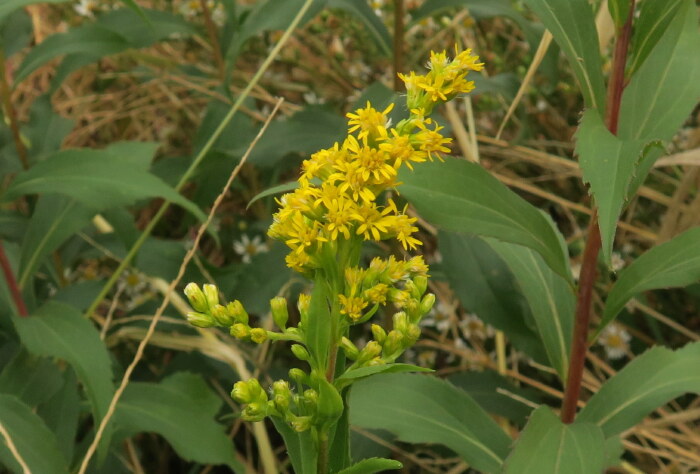
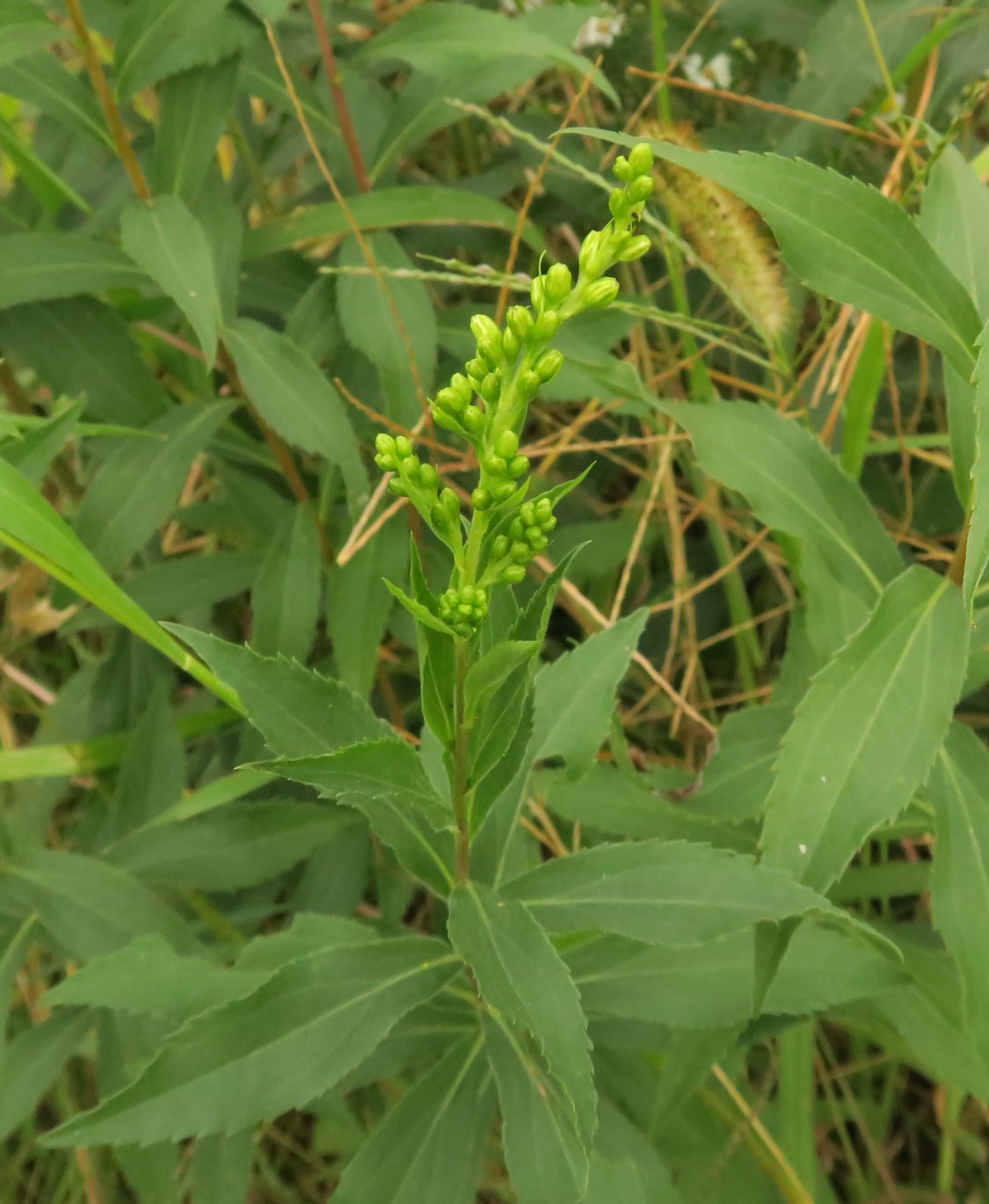

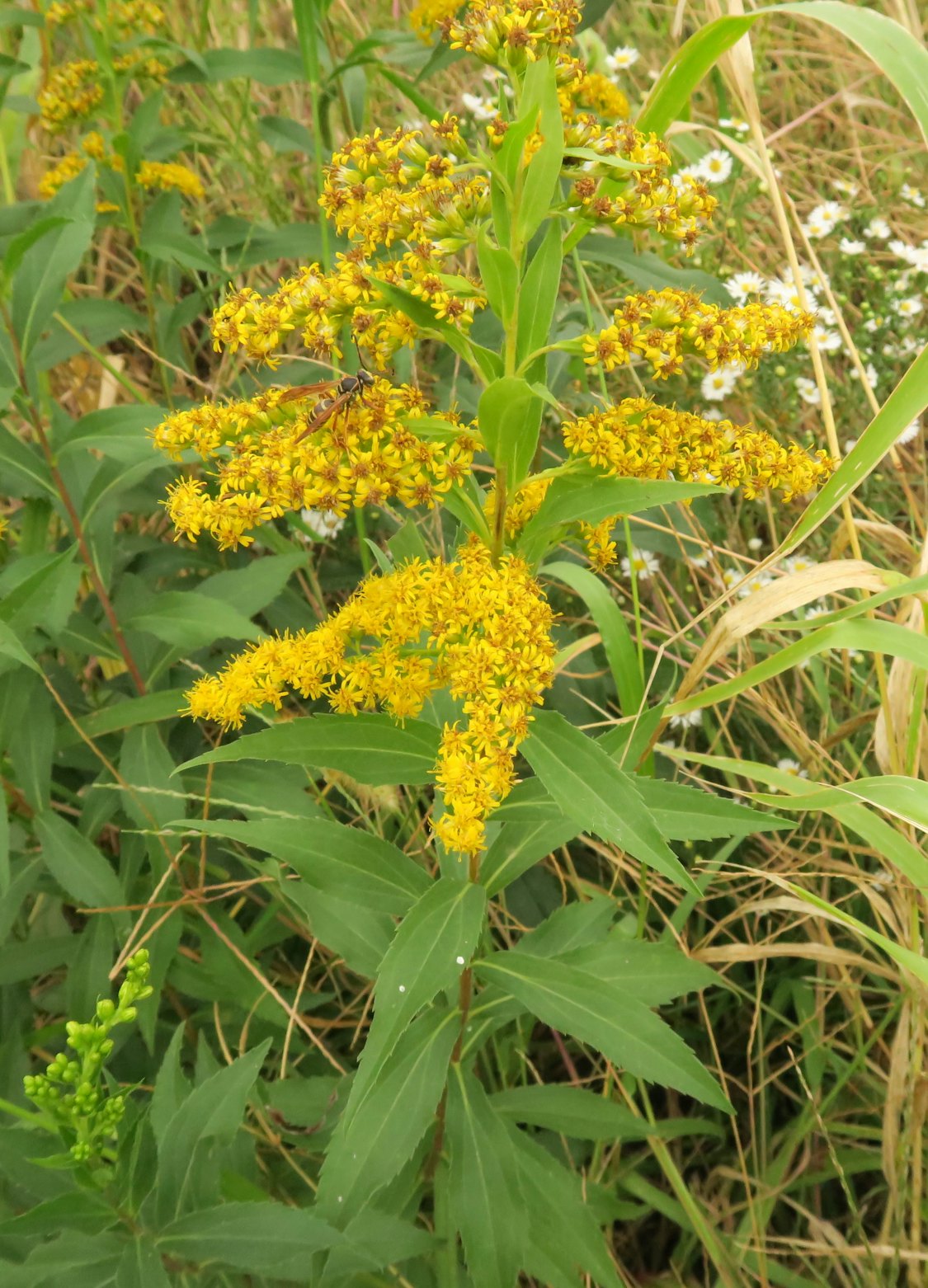
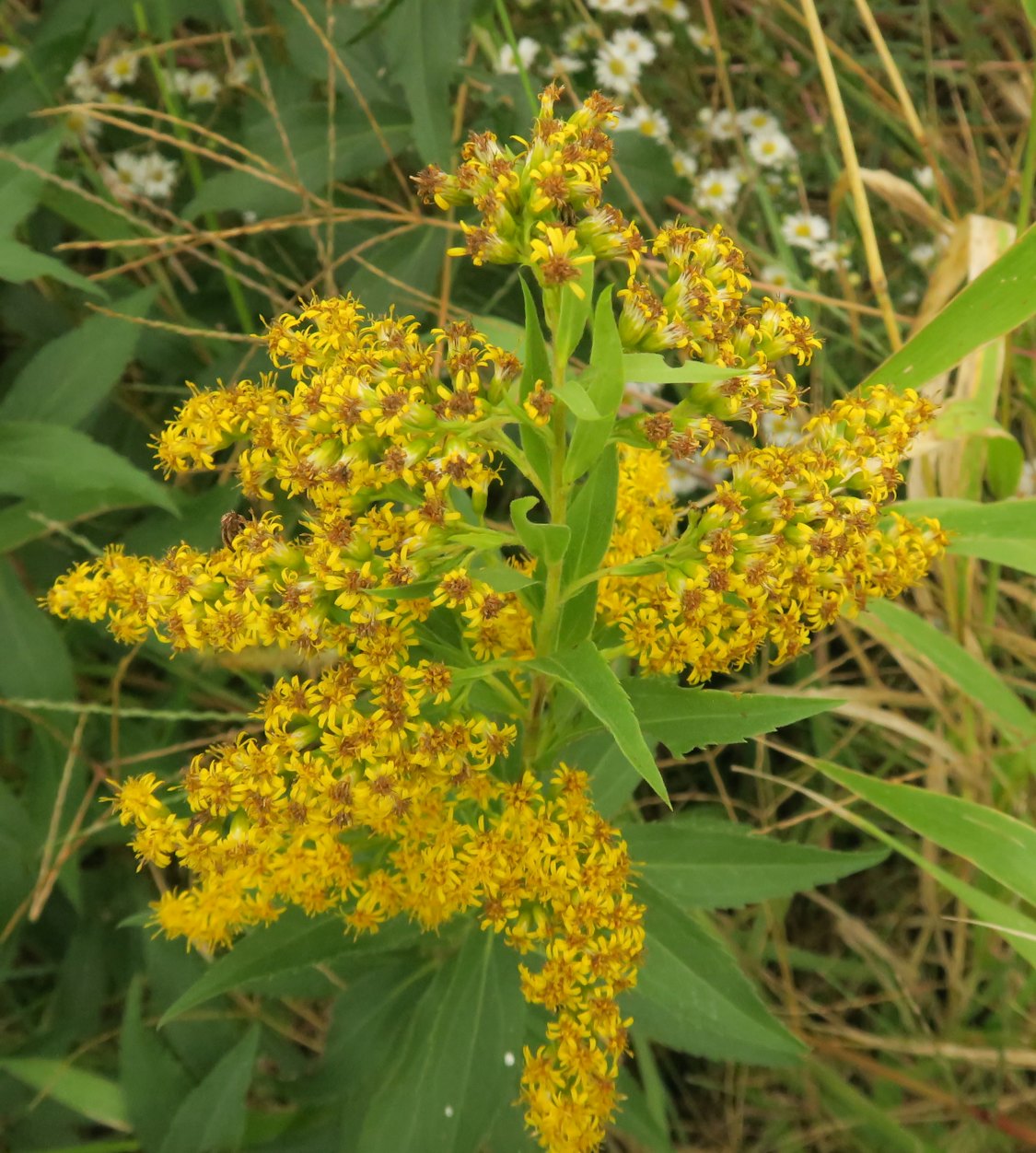

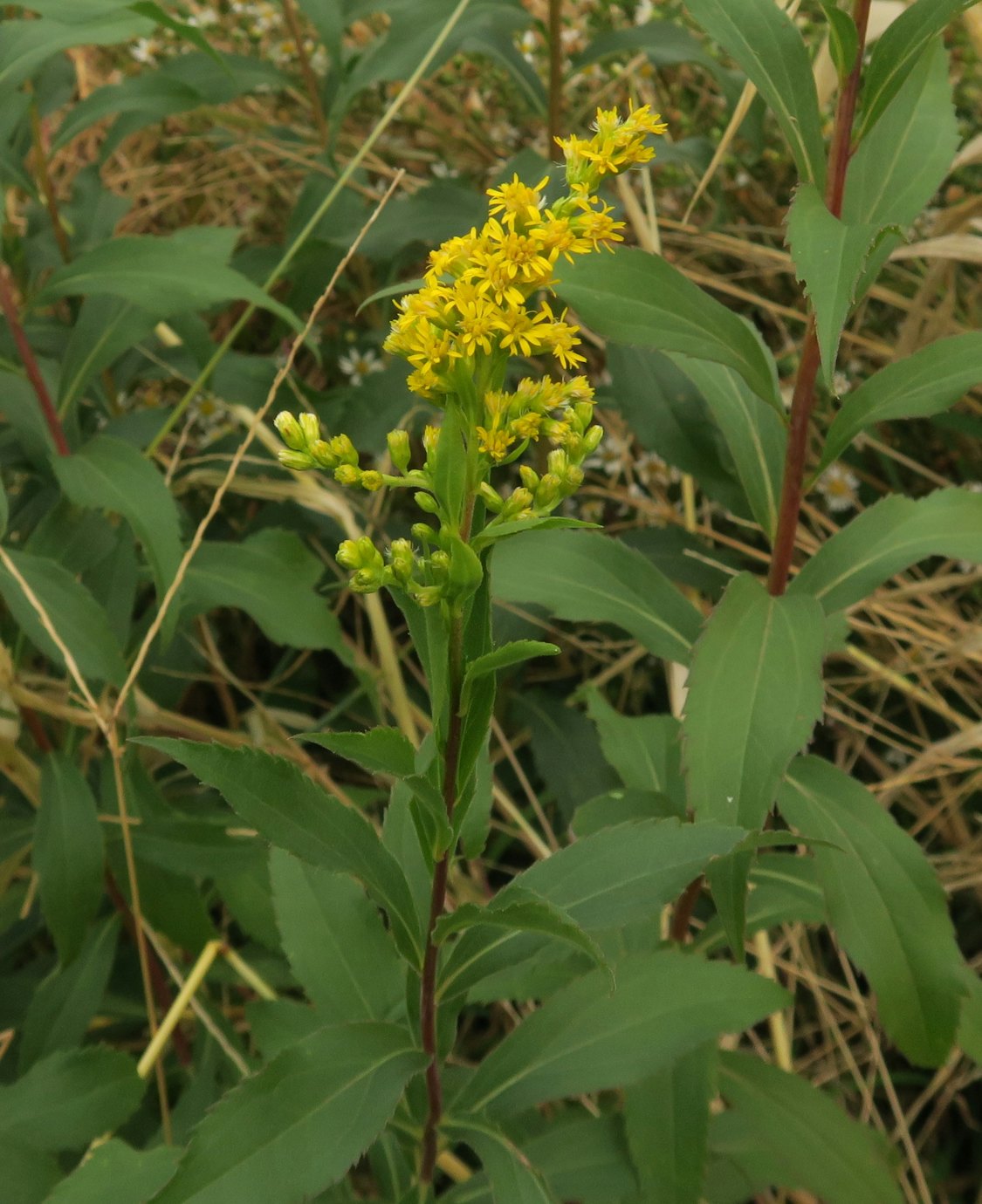

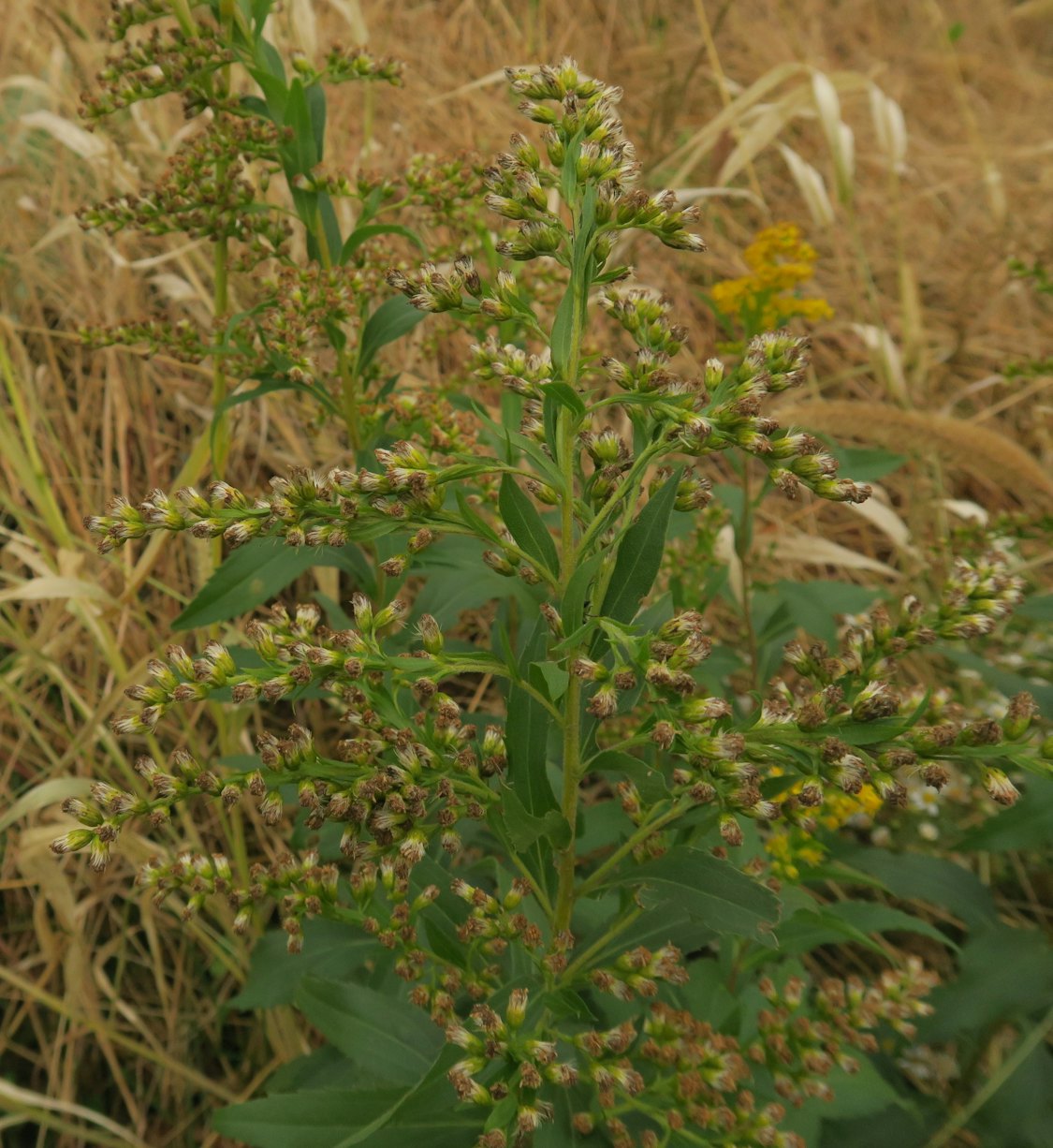
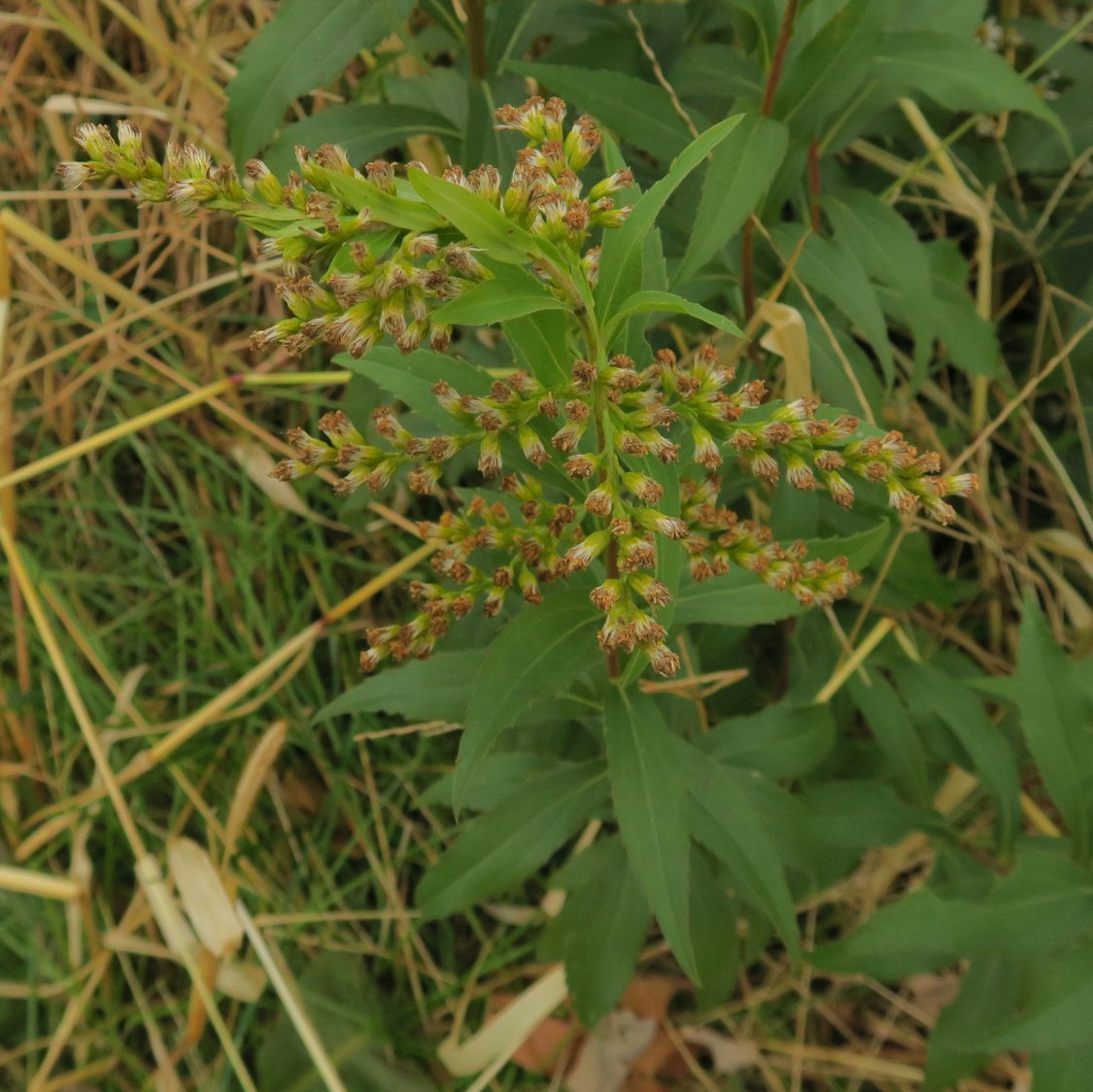
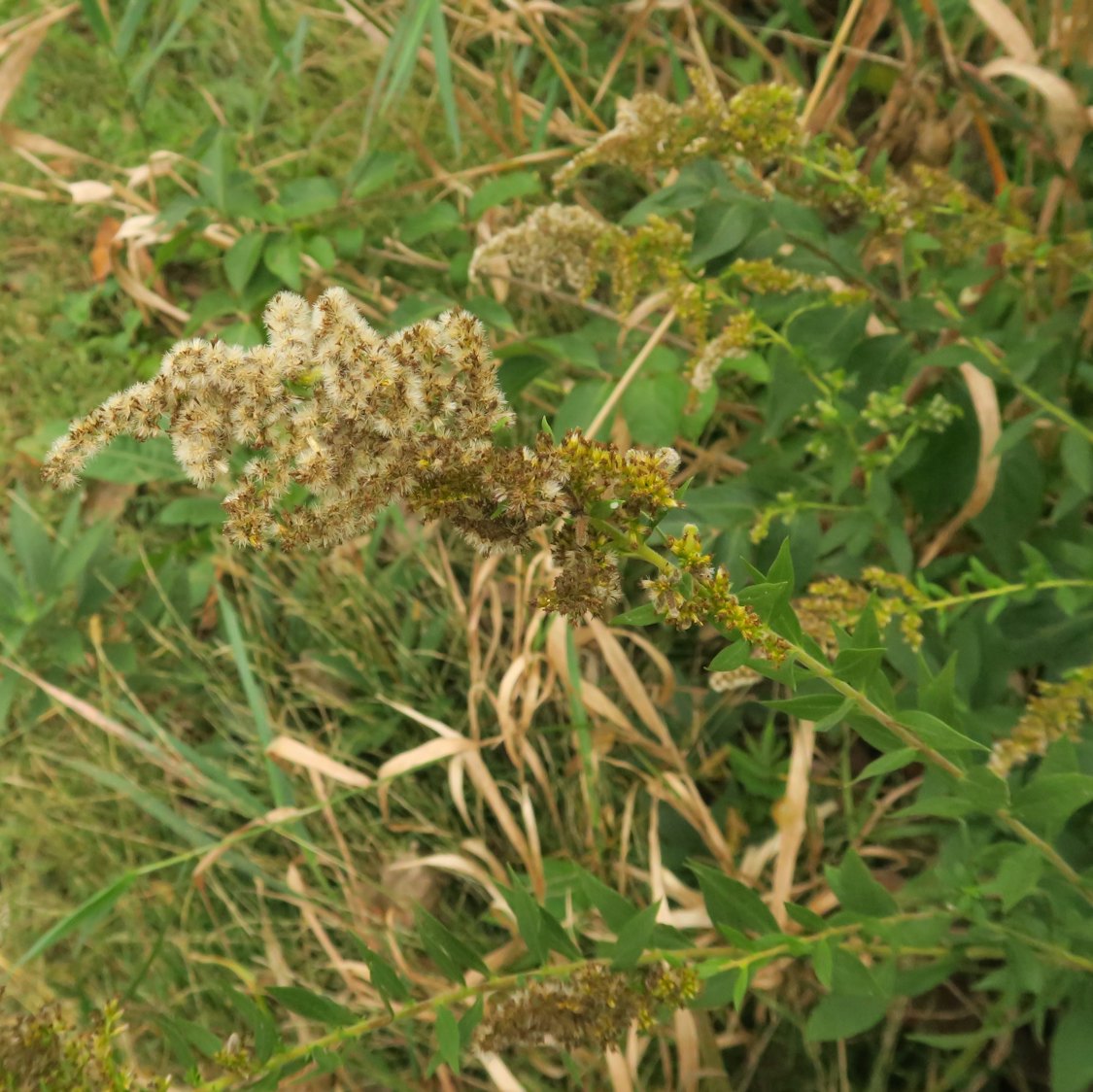
1 Comment
Missouri Goldenrod attracts so many kinds of insects...
…that it’s always fun to explore a patch of it in early fall. I think that wasp might be a species of potter wasp, but am not sure. These photos show the plant well, thank you.
PrairieFan Sun 31 Oct 12:34 PM